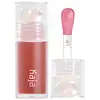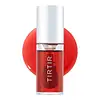What's inside
What's inside
 Key Ingredients
Key Ingredients

No key ingredients
 Benefits
Benefits

 Concerns
Concerns

 Ingredients Side-by-side
Ingredients Side-by-side

Polyglyceryl-2 Isostearate/Dimer Dilinoleate Copolymer
EmollientCamellia Japonica Seed Oil
EmollientSimmondsia Chinensis Seed Oil
EmollientDilinoleic Acid/Butanediol Copolymer
Caprylic/Capric Triglyceride
MaskingDextrin Palmitate
EmulsifyingRosa Canina Fruit Oil
EmollientHippophae Rhamnoides Fruit Oil
Skin ProtectingSorbitan Isostearate
EmulsifyingEclipta Prostrata Extract
Skin ConditioningMenthol
MaskingCurcuma Longa Root Extract
MaskingMelia Azadirachta Leaf Extract
Skin ConditioningDehydroacetic Acid
PreservativeMelia Azadirachta Flower Extract
Skin ConditioningMoringa Oleifera Seed Oil
EmollientCorallina Officinalis Extract
Skin ConditioningMelia Azadirachta Bark Extract
AntimicrobialOcimum Sanctum Leaf Extract
Skin ConditioningLinalool
PerfumingLimonene
PerfumingParfum
MaskingPolyglyceryl-2 Isostearate/Dimer Dilinoleate Copolymer, Camellia Japonica Seed Oil, Simmondsia Chinensis Seed Oil, Dilinoleic Acid/Butanediol Copolymer, Caprylic/Capric Triglyceride, Dextrin Palmitate, Rosa Canina Fruit Oil, Hippophae Rhamnoides Fruit Oil, Sorbitan Isostearate, Eclipta Prostrata Extract, Menthol, Curcuma Longa Root Extract, Melia Azadirachta Leaf Extract, Dehydroacetic Acid, Melia Azadirachta Flower Extract, Moringa Oleifera Seed Oil, Corallina Officinalis Extract, Melia Azadirachta Bark Extract, Ocimum Sanctum Leaf Extract, Linalool, Limonene, Parfum
Polyglyceryl-2 Isostearate/Dimer Dilinoleate Copolymer
EmollientPolyglyceryl-2 Triisostearate
EmulsifyingCaprylic/Capric Triglyceride
MaskingIsostearic Acid
CleansingSimmondsia Chinensis Seed Oil
EmollientSilica Dimethyl Silylate
EmollientIsopropyl Sorbate
AntimicrobialTuna Extract
Skin Conditioning1,2-Hexanediol
Skin ConditioningMelia Azadirachta Leaf Extract
Skin ConditioningHippophae Rhamnoides Fruit Oil
Skin ProtectingParfum
MaskingEthylhexylglycerin
Skin ConditioningAbies Alba Seed Oil
AntimicrobialPentaerythrityl Tetra-Di-T-Butyl Hydroxyhydrocinnamate
AntioxidantMelia Azadirachta Flower Extract
Skin ConditioningCI 45380
Cosmetic ColorantCoccinia Indica Fruit Extract
Skin ConditioningSolanum Melongena Fruit Extract
Skin ConditioningAloe Barbadensis Leaf Extract
EmollientCurcuma Longa Root Extract
MaskingCoral Extract
Skin ConditioningOcimum Basilicum Leaf Extract
Skin ConditioningCamellia Seed Oil
Calendula Officinalis Extract
Skin ConditioningRosa Damascena Flower Oil
MaskingTocopherol
AntioxidantPolyglyceryl-2 Isostearate/Dimer Dilinoleate Copolymer, Polyglyceryl-2 Triisostearate, Caprylic/Capric Triglyceride, Isostearic Acid, Simmondsia Chinensis Seed Oil, Silica Dimethyl Silylate, Isopropyl Sorbate, Tuna Extract, 1,2-Hexanediol, Melia Azadirachta Leaf Extract, Hippophae Rhamnoides Fruit Oil, Parfum, Ethylhexylglycerin, Abies Alba Seed Oil, Pentaerythrityl Tetra-Di-T-Butyl Hydroxyhydrocinnamate, Melia Azadirachta Flower Extract, CI 45380, Coccinia Indica Fruit Extract, Solanum Melongena Fruit Extract, Aloe Barbadensis Leaf Extract, Curcuma Longa Root Extract, Coral Extract, Ocimum Basilicum Leaf Extract, Camellia Seed Oil, Calendula Officinalis Extract, Rosa Damascena Flower Oil, Tocopherol
 Reviews
Reviews

Ingredients Explained
These ingredients are found in both products.
Ingredients higher up in an ingredient list are typically present in a larger amount.
This ingredient is an emollient, solvent, and texture enhancer. It is considered a skin-softener by helping the skin prevent moisture loss.
It helps thicken a product's formula and makes it easier to spread by dissolving clumping compounds.
Caprylic Triglyceride is made by combining glycerin with coconut oil, forming a clear liquid.
While there is an assumption Caprylic Triglyceride can clog pores due to it being derived from coconut oil, there is no research supporting this.
Learn more about Caprylic/Capric TriglycerideCurcuma Longa Root Extract is from the spice, turmeric. Besides being a healthy and delicious spice, turmeric also has plenty of skincare benefits. It has anti-inflammatory, antioxidant, and anti-microbial properties.
Turmeric contains curcumin, an antioxidant. Antioxidants help neutralize unstable free-radical molecules. Free-radical molecules may damage your skin's cells and DNA. Curcumin may help with anti-aging.
Curcumin also has anti-inflammatory properties and can help soothe skin and reduce irritation. On top of that, curcumin has been shown to help prevent hyperpigmentation from sun damage.
The anti-microbial property of turmeric can make it effective in treating acne. This property has also been shown to help regulate the production of sebum.
Learn more about Curcuma Longa Root ExtractHippophae Rhamnoides Fruit Oil comes from the seabuckthorn berry. The seabuckthorn fruit contains carotenoids, palmitic acid, palmitoleic acid and vitamin E.
The nutritious content of seabuckthorn fruit oil helps hydrate and nourish the skin. A study from 2018 found seabuckthorn may help with alleviating UV damage due to its anti-inflammatory property.
Carotenoids and Vitamin E help nourish your skin's natural barrier. This barrier protects your skin and is responsible for firm skin.
Learn more about Hippophae Rhamnoides Fruit OilMelia Azadirachta Flower Extract is from the Neem tree. Neem trees originate from India.
Melia Azadirachta Flower Extract contains antioxidants. Antioxidants help fight free-radicals. Free-radicals are molecules that may damage your skin cells, such as pollution.
The flowers of this tree are lilac colored.
Learn more about Melia Azadirachta Flower ExtractMelia Azadirachta Leaf Extract is extract from the neem plant.
The leaves of this tree contain flavonoids and polyphenols. These two compounds are antioxidants, anti-inflammatory, and antibacterial. Further research is needed as to their effects when applied on skin.
Parfum is a catch-all term for an ingredient or more that is used to give a scent to products.
Also called "fragrance", this ingredient can be a blend of hundreds of chemicals or plant oils. This means every product with "fragrance" or "parfum" in the ingredients list is a different mixture.
For instance, Habanolide is a proprietary trade name for a specific aroma chemical. When used as a fragrance ingredient in cosmetics, most aroma chemicals fall under the broad labeling category of “FRAGRANCE” or “PARFUM” according to EU and US regulations.
The term 'parfum' or 'fragrance' is not regulated in many countries. In many cases, it is up to the brand to define this term.
For instance, many brands choose to label themselves as "fragrance-free" because they are not using synthetic fragrances. However, their products may still contain ingredients such as essential oils that are considered a fragrance by INCI standards.
One example is Calendula flower extract. Calendula is an essential oil that still imparts a scent or 'fragrance'.
Depending on the blend, the ingredients in the mixture can cause allergies and sensitivities on the skin. Some ingredients that are known EU allergens include linalool and citronellol.
Parfum can also be used to mask or cover an unpleasant scent.
The bottom line is: not all fragrances/parfum/ingredients are created equally. If you are worried about fragrances, we recommend taking a closer look at an ingredient. And of course, we always recommend speaking with a professional.
Learn more about ParfumWe don't have a description for Polyglyceryl-2 Isostearate/Dimer Dilinoleate Copolymer yet.
This oil comes from the seeds of the desert shrub called Jojoba. It is more commonly known as jojoba oil, a non-comedogenic oil.
Jojoba oil does not contain fragrance and has many fatty-acids, making it a great soothing ingredient.
It also contains Vitamin E, a great moisturizing ingredient. Vitamin E is also an antioxidant and protects your skin against oxidative damage.
This ingredient humectant properties, meaning it helps draw moisture from the air. This helps keep your skin hydrated.
While jojoba has antibacterial properties, it is only able to kill some strains of bacteria.
Studies also show it helps in wound healing. In fact, Indigenous cultures have used jojoba as a moisturizer and to help treat burns for centuries.
Fun fact: Jojoba oil similar to natural human skin sebum, so it has a great effect on dry skin. It is also promising with helping to regulate sebum production.
Due to its fatty acid content, Jojoba oil may not be fungal acne safe. We recommend speaking with a professional if you have any concerns.
Learn more about Simmondsia Chinensis Seed Oil